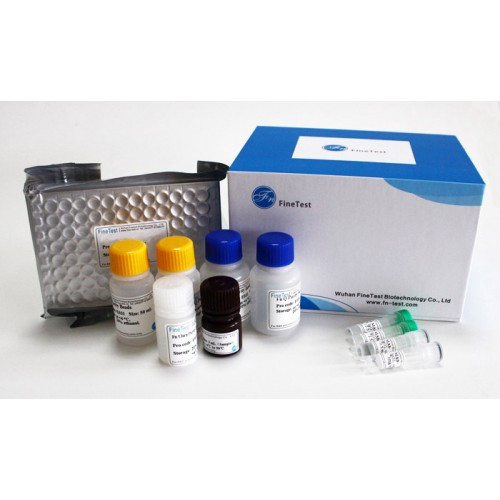Product Description
Recombinant Mouse Muscle, skeletal receptor tyrosine-protein kinase (Musk), partial is available at Gentaur for Next week Delivery.
Gene Name: Musk
Alternative Names : Muscle-specific tyrosine-protein kinase receptor
Expression Region : 22-494aa
AA Sequence : EKLPKAPVITTPLETVDALVEEVATFMCAVESYPQPEISWTRNKILIKLFDTRYSIRENGQLLTILSVEDSDDGIYCCIANNGVGGAVESCGALQVKMKPKITRPPINVKIIEGLKAVLPCTTMGNPKPSVSWIKGDNALRENSRIAVLESGSLRIHNVQKEDAGQYRCVAKNSLGTAYSKLVKLEVEVFARILRAPESHNVTFGSFVTLRCTAIGIPVPTISWIENGNAVSSGSIQESVKDRVIDSRLQLFITKPGLYTCIATNKHGEKFSTAKAAATVSIAEWSKSQKDSQGYCAQYRGEVCDAVLAKDALVFFNTSYRDPEDAQELLIHTAWNELKAVSPLCRPAAEALLCNHLFQECSPGVVPTPMPICREYCLAVKELFCAKEWQAMEGKAHRGLYRSGMHLLPVPECSKLPSMHRDPTACTRLPYLDYKKENITTFPSITSSRPSADIPNLPASTSSFAVSPAYSMT
Sequence Info : Extracellular Domain
Tag Info : N-terminal 10xHis-SUMO-tagged and C-terminal Myc-tagged
Theoretical MW : 71.9 kDa
Storage Buffer : Tris/PBS-based buffer, 5%-50% glycerol. If the delivery form is lyophilized powder, the buffer before lyophilization is Tris/PBS-based buffer, 6% Trehalose, pH 8.0.
Endotoxin Level : Not tested-
Biological Activity : Not tested
Storage : Short term: -20°C; Long term: -80°C. Minimize freeze and thaw cycles.
Research Area : Signal Transduction
Restriction : For Research Use Only. Not for use in diagnostic procedures, drug use, or for administration to humans or animals.
Relevance : Receptor tyrosine kinase which plays a central role in the formation and the maintenance of the neuromuscular junction (NMJ), the synapse between the motor neuron and the skeletal muscle. Recruitment of AGRIN by LRP4 to the MUSK signaling complex induces phosphorylation and activation of MUSK, the kinase of the complex. The activation of MUSK in myotubes regulates the formation of NMJs through the regulation of different processes including the specific expression of genes in subsynaptic nuclei, the reorganization of the actin cytoskeleton and the clustering of the acetylcholine receptors (AChR) in the postsynaptic membrane. May regulate AChR phosphorylation and clustering through activation of ABL1 and Src family kinases which in turn regulate MUSK. DVL1 and PAK1 that form a ternary complex with MUSK are also important for MUSK-dependent regulation of AChR clustering. May positively regulate Rho family GTPases through FNTA. Mediates the phosphorylation of FNTA which promotes prenylation, recruitment to membranes and activation of RAC1 a regulator of the actin cytoskeleton and of gene expression. Other effectors of the MUSK signaling include DNAJA3 which functions downstream of MUSK. May also play a role within the central nervous system by mediating cholinergic responses, synaptic plasticity and memory formation.
Function : Receptor tyrosine kinase which plays a central role in the formation and the maintenance of the neuromuscular junction (NMJ), the synapse between the motor neuron and the skeletal muscle. Recruitment of AGRIN by LRP4 to the MUSK signaling complex induces phosphorylation and activation of MUSK, the kinase of the complex. The activation of MUSK in myotubes regulates the formation of NMJs through the regulation of different processes including the specific expression of genes in subsynaptic nuclei, the reorganization of the actin cytoskeleton and the clustering of the acetylcholine receptors (AChR) in the postsynaptic membrane. May regulate AChR phosphorylation and clustering through activation of ABL1 and Src family kinases which in turn regulate MUSK. DVL1 and PAK1 that form a ternary complex with MUSK are also important for MUSK-dependent regulation of AChR clustering. May positively regulate Rho family GTPases through FNTA. Mediates the phosphorylation of FNTA which promotes prenylation, recruitment to membranes and activation of RAC1 a regulator of the actin cytoskeleton and of gene expression. Other effectors of the MUSK signaling include DNAJA3 which functions downstream of MUSK. May also play a role within the central nervous system by mediating cholinergic responses, synaptic plasticity and memory formation.
Involvement in disease :
Subcellular location : Cell junction, synapse, postsynaptic cell membrane, Single-pass type I membrane protein
Protein Families : Protein kinase superfamily, Tyr protein kinase family
Tissue Specificity : Expressed preferentially in skeletal muscle.
Paythway :
Uniprot ID : Q61006
 Euro
Euro
 British Pound
British Pound
 US Dollar
US Dollar








